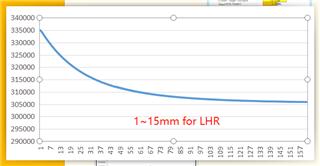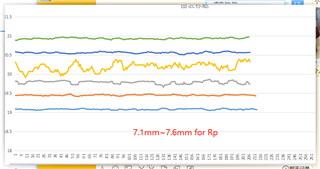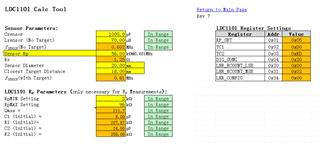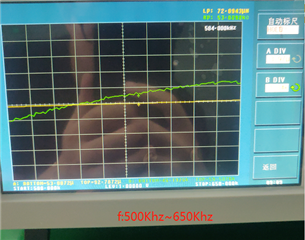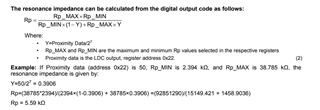Other Parts Discussed in Thread: LDC1041, LDC1051
Hi TI, I am using ldc1101 for metal distance measurement,
The inductance is a ferrite wire wound inductor with a diameter of 26mm. The maximum sensing distance is 15mm. L: 70uH; C: 1000pF
There are several problems in the use process:
Q1: Everything is normal at a short distance (<8mm), but when moving at a long distance (>10mm), Rp is very unstable. Can this be improved? I noticed that you always recommend PCB coils,Is this the key?
Q2: Aiming at the problem of Q1, Therefore, the long-distance test adopts the LHR mode for measurement. The curve of the exported data is very good. but when debugging the second PCB (the other 69uH induction), Large deviations in LHR data. But the Rp changes of the two PCBs are very close, i think that the PCB and the inductance are good. How to explain it? Is there a formula to derive the relationship between distance and L?
help please..
Do I need to attach the configuration of the program?
